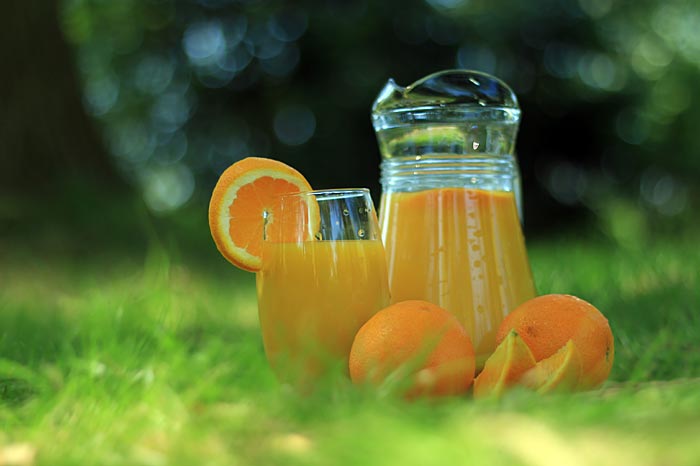Recent study reveals potential for not-from-concentrate juice
WITH 1.36 BILLION residents, China is the most populated country in the world. It may come as a surprise, however, to learn that such a high value market for U.S. agriculture does not include a single glass of fresh Florida orange juice — at least, not yet.
Dr. Zhifeng Gao, an associate professor of food and resource economics at The University of Florida’s Institute of Food and Agricultural Sciences (UF/IFAS), has studied the potential for a 100 percent not-from-concentrate orange juice market in China. Other members of the research team included student Xuqi Chen, Dr. Fred Gmitter, and Dr. Lisa House, as well as two collaborators in China, Chenfeng Zong from China Agricultural University and Jiaoju Ge from Harbin Institute of Technology Shenzhen Graduate School.
Dr. Gao conducted a research survey of 1,053 consumers from four large cities in China: Beijing, Shanghai, Zhengzhou, and Shenzhen. He surveyed people upon their entrance into grocery stores and discovered that the Chinese juice market is dominated by 10 percent juice drink products. His study also found that 86 percent of Chinese consumers agreed that there was a difference between fruit juice and fruit drinks, but 78 percent of consumers were seemingly unaware of the fact that most fruit juice products they buy contain only 10 percent juice, on average. In reality, Chinese consumers are not aware of all the health benefits contained in 100 percent NFC (not from concentrate) fresh Florida orange juice — that it is a natural, safe, and healthy part of our western diets.
The findings of Dr. Gao’s study indicate that China’s NFC orange juice market is currently untapped, which means an opportunity for American citrus growers. However, the success of the market in China depends on educating consumers about the nutritional value of 100 percent NFC orange juice and reducing the price. Consumers on taobao.com (China’s equivalent to eBay), for example, are currently paying between $8.55 and $12.75 per 1.75 liters of NFC orange juice.
In addition to educating Chinese consumers about the health and nutritional benefits of NFC orange juice and decreasing the price, Dr. Gao explains, “Advertisement and adaptation are crucial to success in the Chinese market. For the Florida fresh orange juice industry to succeed in the Chinese market, they may learn from the success of Kentucky Fried Chicken (KFC) and Pizza Hut in China.” Chinese consumers have added more western food products into their diets in recent years, including fast food.
Dr. Gao goes on to say, “Advertising can increase Chinese consumer familiarity with the product. It can also build brand awareness among the Chinese consumers, such as how Florida fresh orange juice is premium, safe, natural, healthy, and tastes better. With the awareness and brand image, consumers are more likely to purchase and pay a premium price for Florida orange juice in China.” As for adaptation, “Some adaptations, such as changes in flavors, packages, and size to attract local customers will also help increase the competiveness of Florida NFC orange juice.”
CREDIT
article by JULIE GMITTER
Posted May 6, 2016

